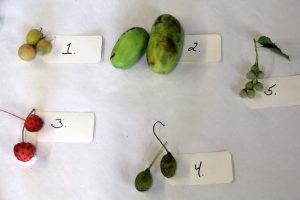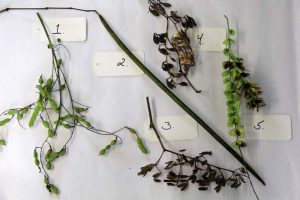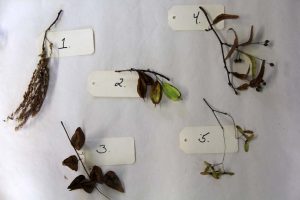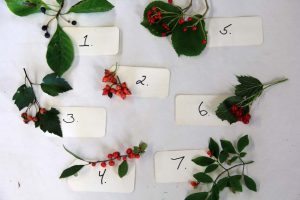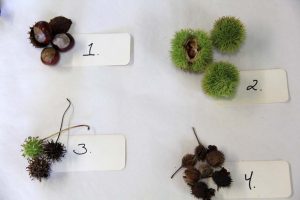Along the Garden Path
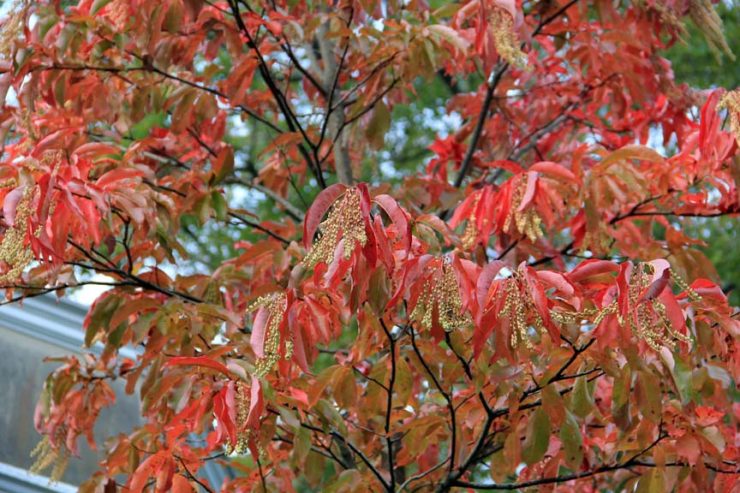
Fruit of the Fall
Walking down the garden path this week is staff horticulturist, Joe Verstandig.
When fall finally arrives, it is simply impossible not to notice the brilliant colors that sweep through the trees. From the early golden yellows of the ash to the burning glory of the Japanese maples, the beauty evolves as the weather gets colder and the light weaker. But the seasonal coloration isn’t the only interest our deciduous trees have to offer. It is now when many trees go to seed and bear their fruit. Birds and small animals jump at the chance to obtain ample energy before a long winter. Coming in all shapes, colors, and sizes, the progeny of trees offers another form of allure to the crisp fall landscape.
When you think of fruit, what do you think of? Most would probably mention apples, pears, oranges, and peaches, delicious and hearty produce from the store or maybe a tree in the backyard. But fruit is much more than just the juicy and flavorful. In botany, a fruit is any structure bearing seed. So maple schizocarps and oak acorns are just as much fruit as a yellow banana? Yes, but we’ll break it down more than that, at least a little. Almost all the seed-carrying structures you will see this autumn are berries, nuts, pods, or traditional fleshy fruit.
Do you know your tree fruits? We’ve collected and sorted various structures from the trees here at Blithewold and laid them out below. Quiz yourself ̶ some are more difficult than others.
- Group A: Traditional Fleshy Fruit
- Group B: Large Pods
- Group C: Small Pods
- Group D: Berries
- Group E: Nuts
Scroll Down for the Answers:
Group A: Traditional Fleshy Fruit
1. Ginkgo Ginkgo biloba
2. Pawpaw Asimina triloba
3. Chinese Dogwood Cornus kousa
4. Dove Tree Davidia involucrata
5. Japanese Snowbell Styrax japonicus
Group B: Large Pods
1. Pagoda Tree Styphnolobium japonicum
2. Southern Catalpa Catalpa bignoides
3. Japanese Tree lilac Syringa reticulate
4. Chinese Toon Cedrela sinensis
5. Chinese Wingnut Pterocarya stenoptera
Group C: Small Pods
1. Sourwood Oxydendron arboreum
2. Mountain Silverbell Halesia tetraptera
3. Golden Rain tree Koelreutaria paniculata
4. Little leafed Linden Tillia cordata
5. Japanese Maple Acer palmatum
Group D: Berries
1. Tupelo Nyssa sylvatica
2. American Dogwood Cornus florida
3. Green Hawthorne Crateagus viridis
4. Winterberry Ilex verticillata
5. Linden Viburnum Viburnum dilatatum
6. American Cranberrybush Viburnum trilobum
7. Burning Bush Euyonomus alatus
Group E: Nuts
1. Horsechestnut Aesculus hippocastanum
2. Chinese Chestnut Castanea mollissima
3. Sweetgum Liquidambar styraciflua
4. European beech Fagus sylvatica

